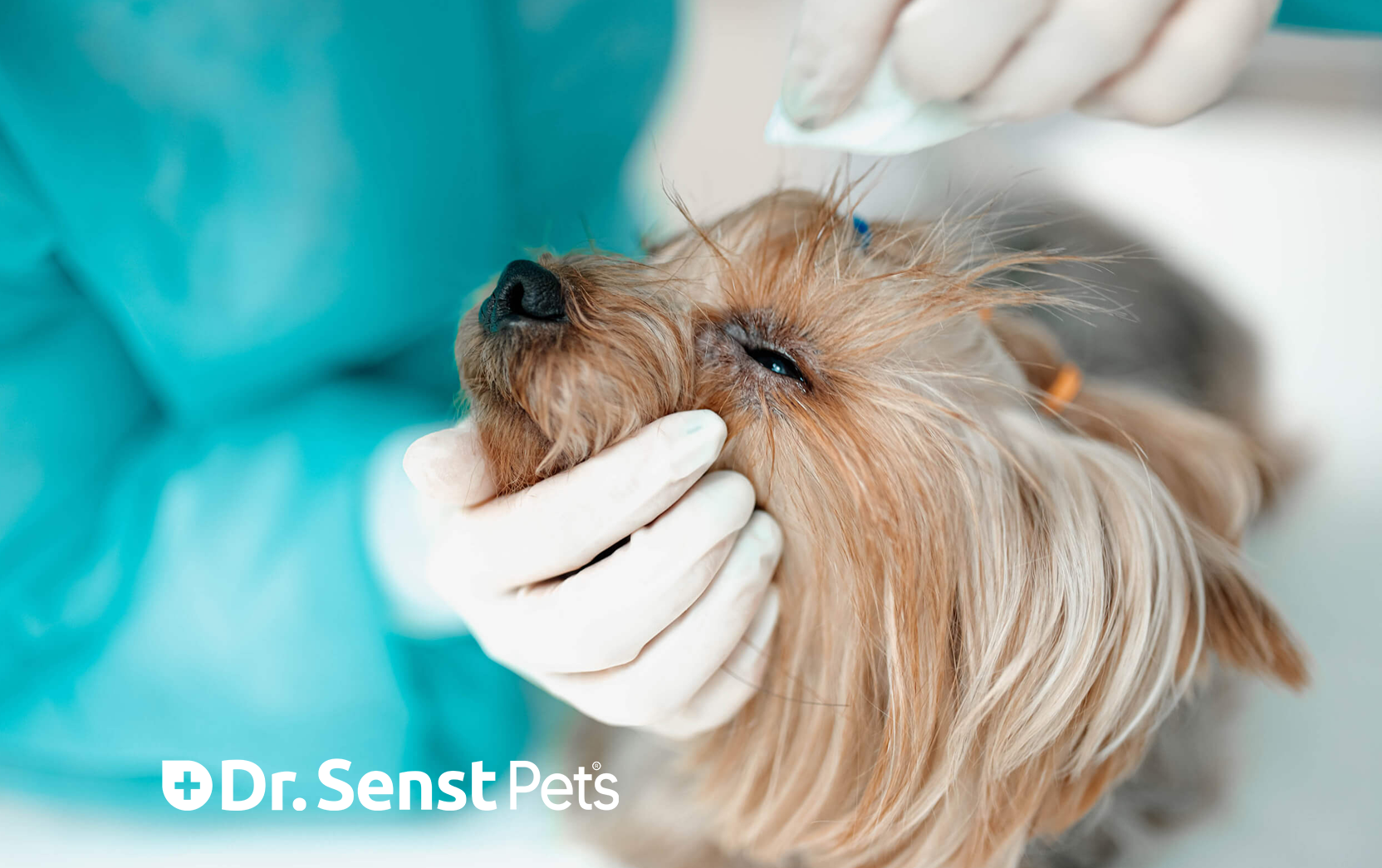
- by Dr.Thilo Senst
How to Manage Tear Stains in Dogs: Causes & Effective Remedies
- by Dr.Thilo Senst
Managing Tear Staining in Dogs: Causes and Remedies
If you’ve noticed reddish-brown stains forming beneath your dog’s eyes, you’re not alone. Dog tear stains are a common issue, particularly for breeds with light fur or flat faces, such as Maltese, Shih Tzus, and Poodles. While generally not a serious health concern, tear stains can indicate underlying issues that may need addressing. In this article, we’ll explore the causes of tear stains in dogs, treatment options, and practical tips for managing and preventing them.
Tear stains often appear as dark, reddish-brown marks below a dog’s eyes, sometimes spreading along the cheeks. While not inherently dangerous, tear stains can indicate discomfort or, in some cases, health issues requiring attention.
Though primarily a cosmetic issue, tear stains can lead to more severe conditions, such as bacterial infections, if not managed appropriately.
Understanding the underlying causes of tear stains can help determine the most effective treatment. Tear stains can be triggered by a variety of factors:
Some dogs produce more tears due to natural physiology or conditions like entropion (when eyelids roll inward), causing constant moisture that leads to tear stains.
Blocked or partially blocked tear ducts can cause tears to overflow onto the fur, creating stains over time.
Certain minerals and ingredients in dog food, especially those high in iron or artificial additives, may contribute to tear staining.
Excessive moisture near the eyes provides a favourable environment for yeast, particularly Ptyrosporin, which leads to the characteristic reddish-brown stain.
Tear staining is more common in specific breeds, particularly those with short noses (brachycephalic breeds) or long hair around the eyes.
Imagine watering a plant continuously without proper drainage. Eventually, moisture accumulates and allows mould or mildew to grow. Similarly, a dog with excessive tearing can develop yeast build-up and discolouration in the fur below the eyes, creating those familiar stains.
Addressing tear staining in dogs does more than improve appearance; it also benefits your pet’s overall well-being:
Treating tear stains in dogs involves a combination of targeted care and preventative measures. Here’s a step-by-step approach to managing tear stains:
Use a gentle dog eye cleaner, like Dr. Senst Antiseptic Dog Eye Drops, to keep the area clean. These drops help remove debris and prevent infections. Wipe the area daily with a soft cloth or pet-safe wipe.
Consider a high-quality diet with natural ingredients. Look for dog foods without artificial additives, which can contribute to tear staining. If your dog is prone to allergies, an elimination diet can help identify any triggers.
Keep the hair around your dog’s eyes trimmed to prevent irritation and tear build-up. Longer hair can rub against the eyes, causing tearing and staining.
If your dog’s tear stains persist, consult your veterinarian to rule out any underlying medical conditions like blocked tear ducts or anatomical issues. Veterinary guidance is essential, especially if surgical intervention is necessary.
Some pet owners find success with natural remedies, such as adding a teaspoon of apple cider vinegar to their dog’s water (consult your vet first). This remedy is thought to alter the pH, which can help reduce tear staining.
A recent survey by a leading UK pet health organisation found that approximately 25% of dog owners in the UK have dealt with tear staining, with small breeds and flat-faced breeds being the most affected. Furthermore, 15% of owners reported that dietary adjustments reduced tear stains in their dogs within two months.
The market is filled with products claiming to reduce or eliminate tear stains. When selecting products, look for those specifically formulated for pets, as human eye products can irritate dogs’ eyes.
Dr. Senst Antiseptic Dog Eye Drops are formulated to clean and soothe the eye area effectively, helping reduce the risk of staining and irritation. Using a quality eye cleaner is one of the best ways to manage and prevent tear stains in the long run.
Yes, all dogs can get tear stains, but they are more common in light-coated breeds and those with short noses or long hair around the eyes.
While tear stains themselves are not painful, they can indicate underlying issues that cause discomfort, such as blocked tear ducts or infections.
With consistent care, tear stains can be managed, though some breeds may experience recurring issues. Proper hygiene and diet can significantly reduce the severity of tear stains.
Tear stains don’t have to be a permanent feature of your dog’s appearance. By addressing diet, using high-quality products, and maintaining proper grooming, you can reduce or even eliminate these stains. Here are some Dr. Senst products that can help:
By incorporating these solutions, you can manage and prevent tear stains effectively, ensuring that your dog’s eyes stay clear, comfortable, and healthy.
![]()
Enter your details & download our comprehensive 50+ page printable Dr. Senst Pet Care Planner completley FREE! - keep track of all your pet’s needs, from medical history and training to vet visits, grooming, diet, and more!










Share:
Essential Guide to Puppy Temperament Testing and How to Do It Right
Essential Signs Your Dog Needs a Dental Cleaning